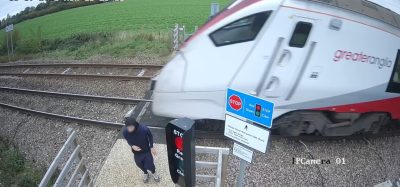Expert Panel: Level crossing safety
Posted: 18 April 2019 | Andrew Knight, Clare Povey, Isabelle Fonverne - UIC | No comments yet
As part of our Level Crossing Safety In-Depth Focus, Global Railway Review asked our Expert Panel: Motorists who misuse level crossings are often the main cause of accidents, but how can the railway industry manage motorist behaviour to significantly reduce the risks at level crossings?
ISABELLE FONVERNE, Senior Advisor – Safety and Interoperability, UIC:
According to the UIC safety database, safety at level crossings showed a huge improvement between 2012 and 2015 in Europe: The number of collisions with a road vehicle dropped by 26 per cent. Nevertheless, there is no significant improvement observed after 2015 and it seems difficult to further reduce the statistics.
In the EU, 98 per cent of train-road vehicle collisions are attributed to driver behaviour. In Great Britain, 62 per cent of crossings are passive but 79 per cent of accidents happen at active crossings. Switzerland has 95 per cent of active crossings accounting for 33 per cent of all accidents, and 67 per cent of accidents at passive crossings. These numbers show how challenging it is to have one solution for all types of crossings in all countries.
Nevertheless, as it seems that collisions at level crossings are linked to human factors, we need to better educate level crossing users (ILCAD), enforce them to respect the highway code and help the sector find innovative solutions to ensure users use level crossings in a safe manner.
The railway industry, human behaviour specialists and road infrastructure/safety authorities must work together to make level crossings more self-explanatory.
The ‘SAFER-LC’ European Commission project coordinated by the UIC aims at improving safety and minimising risk by developing a fully-integrated cross-modal set of innovative solutions and tools for the proactive management and design of level crossing infrastructure. Innovative solutions to benefit motorists could include smart detection and advanced infrastructure-to-vehicle communication systems or the deployment of GPS warning devices on all crossings.
CLARE POVEY, HM Inspector of Railways, ORR:
In December 2018, UK’s Network Rail was fined £200,000, plus costs, after a signaller suffered life-changing injuries when he was hit by a car as he tried to close the gate at East Farleigh Station in Kent. The driver had swerved around the first gate to avoid waiting for a couple of minutes and hit the second that, in turn, knocked the signaller to the ground causing his injuries.
Our investigation revealed that Network Rail’s risk assessment was inadequate, and we prosecuted them for that reason, but that does not mask the fact that it was the driver’s actions which caused the accident.
Level crossings can be alarming, especially as most drivers do not encounter them often, but following simple rules can make sure that everyone stays safe.
Our role is to continue working with Network Rail to reduce the risks at Britain’s 5,939 level crossings, but there will always be some danger when drivers need to use them – so follow the rules and get home safely.
ANDREW KNIGHT, Export Manager, Rosehill Rail:
While the UK is home to the safest rail network in Europe, safety at level crossings remains an issue with approximately 45 vehicle-related incidents a week.
A recent Network Rail study indicated that a lack of knowledge among motorists on how to use a level crossing correctly might be the primary cause behind many of the approximately 10,000 incidents recorded in the UK since 2012 – contesting any perceptions of ineffective level crossing design and infrastructure.
With almost half of these incidents considered avoidable – where drivers ignored or disregarded barriers and warning lights – imposing lower speed limits on adjoining roads would offer motorists more time in which to not only assess the situation at a level crossing, but to hopefully use those additional moments on approach to decide against the rash actions that can cause a fatality.
Network Rail’s ‘Drivers level crossing safety campaign’, launched in October 2018, is firm in its stance that all vehicles – including emergency services – must stop at level crossings when barriers and warnings indicate to do so. However, until we see a decline in the regularity of motor-based incidents at level crossings, perhaps the operator should eliminate all doubt by implementing mandatory, around-the-clock stop points at all level crossings. Surely an increase in road congestion and inconvenience is preferable to lives being lost?
Global Railway Review Autumn/ Winter Issue 2025
Welcome to 2025’s Autumn/ Winter issue of Global Railway Review!
The dynamism of our sector has never been more apparent, driven by technological leaps, evolving societal demands, and an urgent global imperative for sustainable solutions.
>>> Read the issue in full now! <<<
Issue
Related topics
Related organisations
International Union of Railways (UIC), Office of Rail and Road (ORR), Rosehill Rail







